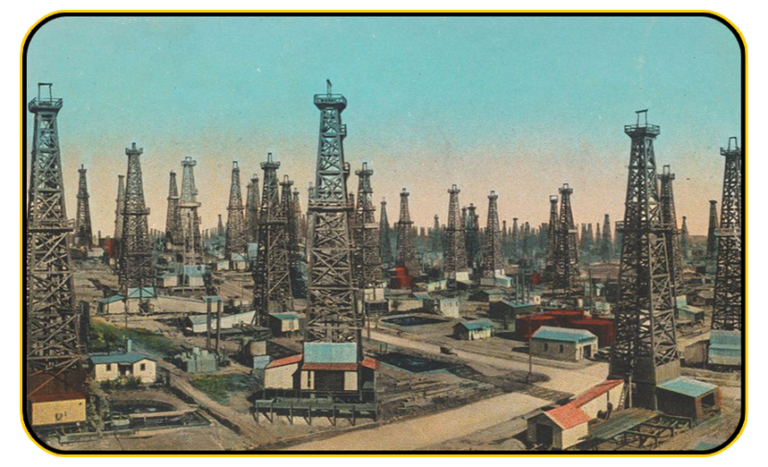
SIGNAL HILL, CALIFORNIA:
A UNIQUE CITY WITH A COLORFUL PAST
Inhabited by the Puva Indians in the 1500’s, they used the hilltop for smoke signals to communicate with tribe members on Santa Catalina Island, 26 miles away. Newly arrived Spanish settlers, called the hill “Loma Sental” meaning Signal Hill. By the start of the 20th century, stately mansions were built on the hilltop, taking advantage of the beautiful 360 degree views. In 1917 and the discovery that oil was present, changed everything and made the hilltop land even more valuable. The city was incorporated in 1924 and was unusual by the fact that the City of Long Beach, completely surrounded the City of Signal Hill.
The first oil well was drilled by the Union Oil Company and abandoned after failing to produce. On June 21, 1921 the Royal Dutch Shell Oil Company, hit a “gusher” and named it, Alamitos Well Number 1. After this discovery, Signal Hill’s history would be forever changed. Over time it proved to be one of the richest oil fields in the world, having produced over 1 billion barrels of oil by 1984. Still actively producing, with over 1.6 million barrels of oil produced in 1994. At various times in Signal Hill’s saga, city officials thought the oil companies money would be over. Second Stage drilling was discovered (using injected underground water) and the often planned new city improvements were again put on hold.
In 1964–65 when I started my career as a police officer for the City of Signal Hill, 1,200 wooden oil derricks decorated the hill top. Surrounding the derricks were the old “nodding donkey pumps” and berms around the pumps often smelled of spilled crude oil. It was now an established “oil town”. Drillers, Roughnecks, Roustabouts and Derrick Men are largely migratory and follow one job to the next. Businesses that supported the oil industry (drilling pipe storage yards. fishing tool manufactures, and a plethora of oil related junk yards) were by far the main industry. Coming in second were bars catering to the notoriously boisterous oil workers.
With a permanent residential population of under 10,000 and a workday population of 5X this amount, we needed a much higher ratio of police to population. Having a dozen or more bars filled with hard working men eager to let off a little steam, we kept busy.
Perhaps the well known watering hole named “Curleys Cafe” will give you a picture of the times. The parking lot had two “horsehead” pumps that were very loud. Opened at 6:00 AM, closed at 2:00 AM everyday. I was always surprised to see the bar filled at opening time. Characters like “A Frame Ray” who held the record for picking up pieces of drilling pipe closest to one end.

Almost all of the business and oil drilling areas of the city were dirty, grungy and an assault on cleanliness. Specialized crime mostly learned in prison was a large problem for both the police and oil companies. In order to control the pumping actions of the several pipelines, large, round graph meters were used by the hundreds. Each meter graph used about a gallon of liquid mercury, with a “U” tube attached at the bottom. Professionals who operated in gangs would deploy men with empty plastic one gallon containers in the middle of the night. They would strategically place the very heavy jugs and leave the scene and later a van or truck would pick them up. This became such a problem that the oil companies would add trace amounts of gold and other elements to the mercury in an effort to apprehend the suspects when selling the mercury to metal dealers.